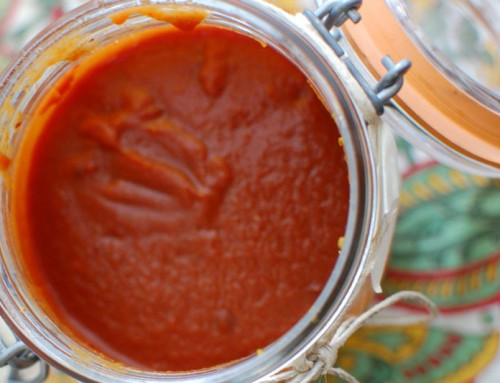Sauerkraut came to Europe via Asia, where people have been pickling cabbage for thousands of years. Because of its high vitamin C content, it was very useful in preventing scurvy and keeping people healthy throughout the winter months when no fresh food was available.
Ingredients:
- cabbage
- sea salt
- filtered water
- crock or mason jar
Preparation:
- Wash your canning jars or crock.
- Shred or slice your cabbage. Most recipes call for pounding the cabbage, to release the juices. I use the side of a wooden meat tenderizer. Pound until the cabbage is glistening. I do this in the crock, but you can use a roasting pan, or anything to keep the cabbage from flying. (I’ve also tried this without any pounding, and achieved great results either way. I recommend trying both approaches to see which you prefer. No pounding is less work.)
- Put a few handfuls of cabbage in, followed by a sprinkling of sea salt (about 1 teaspoon.) Mix the salt into the cabbage a little. Mushy sauerkraut is often caused by lack of salt, so don’t worry about overdoing it with salt. (If you use processed table salt, save it for icy sidewalks. Unrefined sea salt is much healthier for you, and will not cause hypertension.) For a quart mason jar, use about 2 teaspoons of salt.
- Pack all of your cabbage layers into the crock or jars. Do this as tightly as you can. Add filtered water, just enough so that it covers the top of the cabbage.
- Put lids on your jars or crock. You might want to put a plate or pan under the jars to catch any later overflow water from fermentation. If you don’t have a lid for the crock, a small plate, or a water filled bag works to keep the cabbage submerged.
- Set the crock or jars to ferment in a warm place (room temperature) for a week or two. I put mine either in a cupboard or on top of the fridge. I’ve sometimes had to add a little more water part way through the week. The longer you leave it, the more effervescent it will get. Sample a forkful periodically. When it’s ready, put it into the fridge to stop the fermentation.
That’s it. It’s amazingly simple, and produces an excellent result every time. You’ll soon find it a regular part of your meals, and your gut will thank you.











